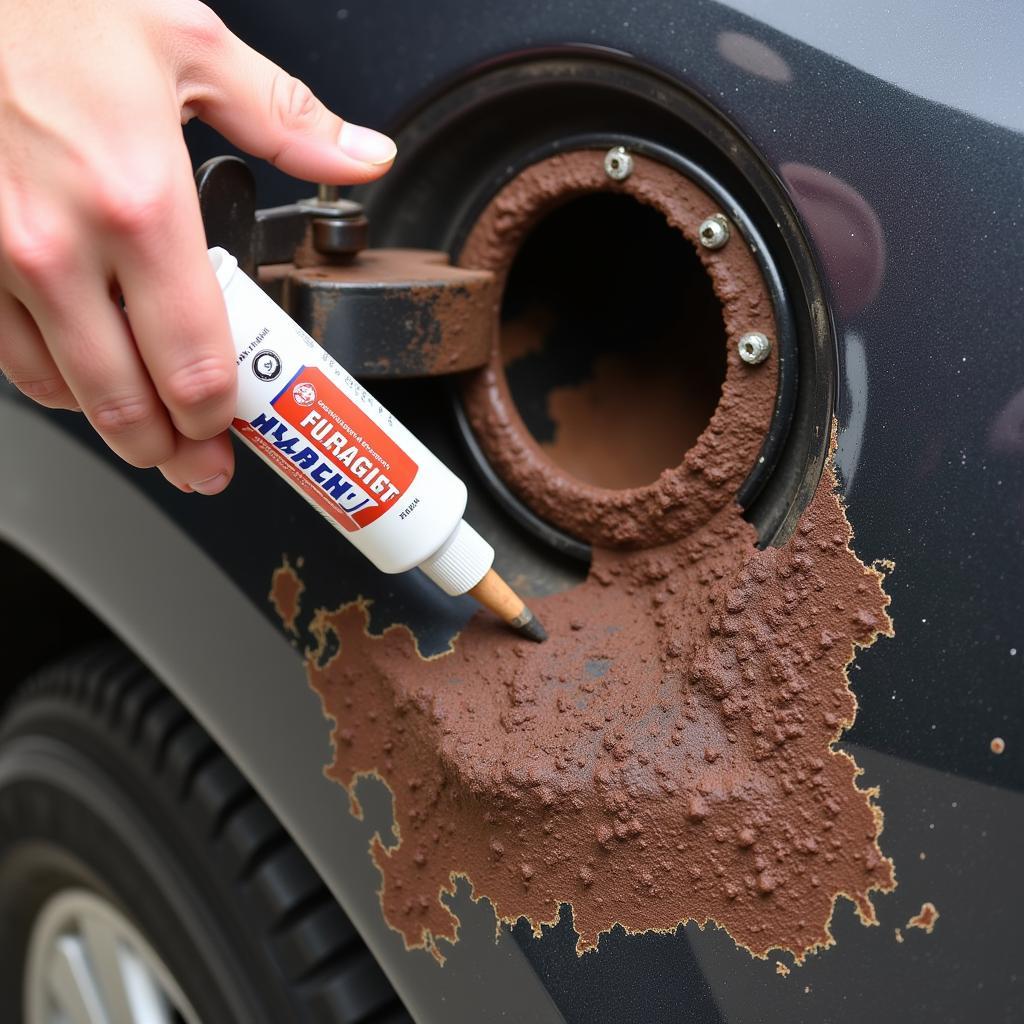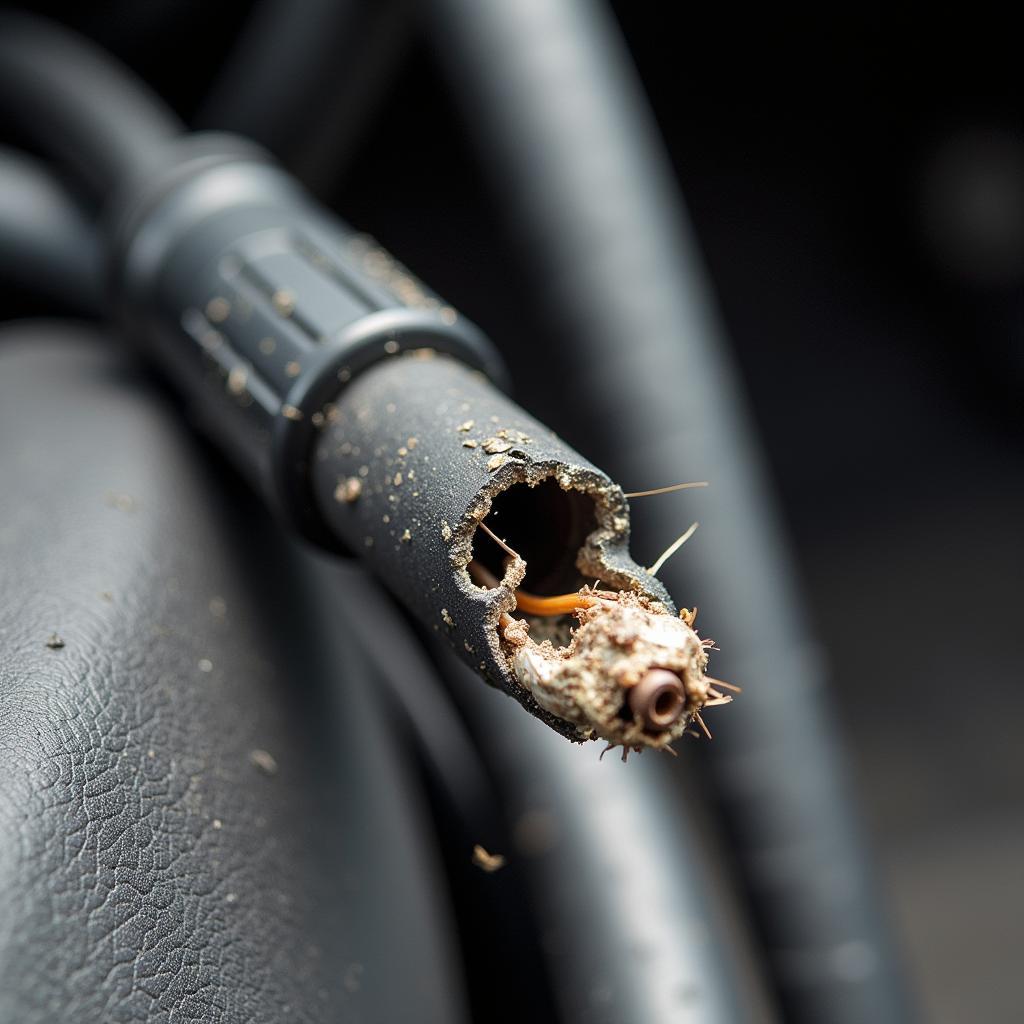Can Flex Seal Fix Cars Gas Tank? This is a common question among car owners facing fuel tank leaks. While Flex Seal is a popular sealant, its effectiveness on gas tanks requires careful consideration. Using the wrong product can lead to dangerous and costly consequences. This article explores the viability of Flex Seal for gas tank repair, delves into safer alternatives, and provides a step-by-step guide for addressing fuel leaks.
Understanding the Challenge of Gas Tank Leaks
Fuel tank leaks pose significant safety risks due to the flammability of gasoline. Ignoring a leak can lead to fires, environmental damage, and even explosions. Furthermore, a leaking gas tank can cause performance issues, reduced fuel efficiency, and that dreaded smell of gasoline permeating your vehicle. Accurately diagnosing the problem is the first step towards a safe and effective repair.
Can Flex Seal Really Fix a Gas Tank?
Flex Seal’s marketing promotes its impressive sealing capabilities, but is it suitable for gasoline? The short answer is: generally, no. While Flex Seal might temporarily plug a small leak, it’s not a long-term solution for gas tank repairs. Gasoline is a powerful solvent that can degrade certain types of sealants, including some formulations of Flex Seal. The constant pressure and sloshing of fuel inside the tank can also cause a Flex Seal patch to fail.
 Flex Seal Application on a Car Gas Tank
Flex Seal Application on a Car Gas Tank
Why Flex Seal Isn’t Ideal for Gas Tank Repair
- Chemical Compatibility: Gasoline can break down the adhesive properties of some Flex Seal products, leading to premature failure.
- Durability: The constant pressure and movement of fuel inside the tank can weaken the seal over time.
- Safety Concerns: Using an unsuitable sealant can create a fire hazard.
Safer and More Effective Alternatives for Gas Tank Repair
Instead of relying on a quick fix like Flex Seal, consider these more reliable options for repairing your gas tank:
- Professional Gas Tank Repair: A qualified mechanic can properly diagnose the issue and perform a safe and lasting repair, which might involve welding, patching, or replacing the tank.
- Gas Tank Sealer Kits: Specifically designed for fuel tanks, these kits offer a more durable and chemical-resistant solution compared to general-purpose sealants.
- Gas Tank Replacement: For severe damage or corrosion, replacing the entire gas tank is often the safest and most effective long-term solution.
How to Fix a Gas Tank Leak: A Step-by-Step Guide
Before attempting any repair, ensure proper ventilation and take necessary safety precautions when working with gasoline.
- Locate the Leak: Carefully inspect the tank for visible cracks, holes, or rust spots.
- Empty the Tank: Drain the fuel into an approved container following safety guidelines.
- Clean the Area: Thoroughly clean the area around the leak with a suitable degreaser and allow it to dry completely.
- Choose the Right Repair Method: Select the appropriate method based on the size and location of the leak (professional repair, gas tank sealer kit, or tank replacement).
- Follow Product Instructions: If using a gas tank sealer kit, carefully follow the manufacturer’s instructions for application and curing time.
- Test the Repair: After the repair has cured, refill the tank with a small amount of fuel and check for any leaks.
Expert Advice from Michael Davis, Automotive Engineer
“Using the correct repair method is crucial. While a temporary fix might seem appealing, it can lead to more serious problems down the road. A professional repair is always the recommended approach for ensuring a safe and lasting solution.”
Conclusion: Addressing Gas Tank Leaks Safely and Effectively
While the question of “can flex seal fix cars gas tank?” is tempting to answer with a quick fix, it’s crucial to prioritize safety and long-term solutions. While Flex Seal may offer a temporary patch, it’s not designed for the harsh environment of a fuel tank. Using a dedicated gas tank repair kit or seeking professional help are safer and more reliable options. By following proper repair procedures and using the right products, you can ensure your vehicle’s safety and prevent further damage. For any automotive queries or assistance, don’t hesitate to contact AutoTipPro at +1 (641) 206-8880 or visit our office at 500 N St Mary’s St, San Antonio, TX 78205, United States.
Expert Insight from Susan Miller, Certified Automotive Technician
“Gas tank leaks should never be ignored. Even a small leak can escalate into a significant safety hazard. A professional assessment can help determine the best course of action and prevent costly repairs in the future.”
FAQ
- What are the signs of a gas tank leak? The smell of gasoline, visible drips, or a decrease in fuel efficiency are common indicators.
- Is it safe to drive with a leaking gas tank? No, driving with a leaking gas tank is extremely dangerous due to the fire hazard.
- How much does it cost to repair a gas tank? The cost varies depending on the severity of the damage and the chosen repair method.
- How long does a gas tank repair take? Repair time can range from a few hours to a full day, depending on the complexity of the repair.
- Can I repair a gas tank myself? While some minor repairs can be done DIY, professional repair is recommended for safety and reliability.
- What is the best way to prevent gas tank leaks? Regular inspections and avoiding impacts to the undercarriage can help prevent leaks.
- What should I do if I smell gasoline in my car? Immediately stop the car in a safe location, turn off the engine, and investigate the source of the smell. If you suspect a gas leak, do not attempt to start the car and contact a professional.







Leave a Reply